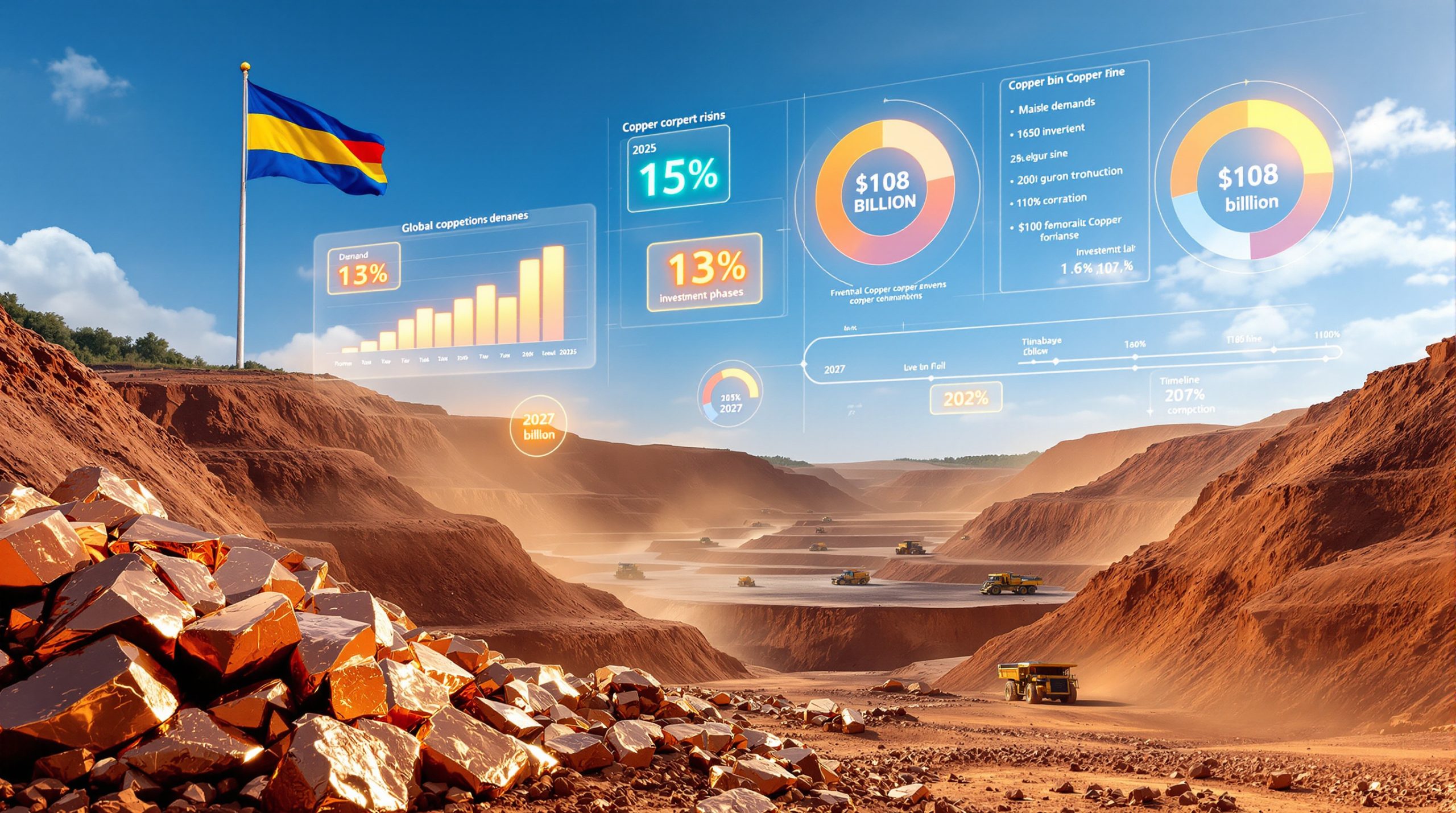The global rare earth elements sector stands at a pivotal moment, driven by unprecedented technological transformation and geopolitical supply chain realignments. The critical minerals energy transition is reshaping industrial demand patterns as nations scramble to secure alternative sources for these strategically critical materials outside of China's dominant processing network.
Defining Rare Earth Elements and Their Strategic Importance
Rare earth elements encompass seventeen chemically similar metallic elements, including neodymium, praseodymium, dysprosium, and terbium. Despite their misleading name, these materials exist in relatively abundant quantities within the Earth's crust. However, their extraction and processing present significant economic and technical challenges that limit global production capacity.
Their unique magnetic, optical, and catalytic properties render them irreplaceable across modern technology applications. From smartphone components to wind turbine generators, these elements enable the functionality of countless devices that power contemporary society. The concentrated nature of their processing capabilities creates vulnerabilities that governments and industries worldwide are now actively addressing.
Market Size and Growth Projections
Recent market analysis reveals substantial growth trajectories across the demand for rare earths sector. According to the International Energy Agency's comprehensive report, global market valuations could reach significant milestones within the next decade as clean energy transitions accelerate worldwide.
Current production data shows tangible expansion. Lynas Rare Earths, the world's largest producer outside China, reported first-quarter revenue of A$200.2 million for the period ending September 30, representing a 66% year-over-year increase from the prior period's A$120.5 million, according to Mining Weekly.
| Production Metric | Q1 2025 | Previous Year Q1 | Growth Rate |
|---|---|---|---|
| Rare Earth Oxide Output | 3,993 metric tons | 2,722 metric tons | +46.6% |
| Dysprosium & Terbium Output | 9 tons | New production | First commercial output |
Which Industries Are Driving Rare Earth Demand Growth?
Electric Vehicle Revolution and Automotive Transformation
The automotive sector's electrification represents perhaps the most significant catalyst for demand for rare earths expansion. Each electric vehicle requires substantial quantities of permanent magnet materials for propulsion systems, with neodymium and praseodymium serving as primary components in high-performance motors.
Manufacturing processes have evolved to optimise rare earth utilisation across multiple vehicle systems:
- Permanent magnet motors for primary propulsion
- Regenerative braking system components
- Advanced driver assistance sensor arrays
- Infotainment and navigation electronics
- Battery management system controllers
Industry executives report strong market conditions supporting continued growth. CEO Amanda Lacaze of Lynas Rare Earths noted that market demand remains robust, with the company maintaining significant flexibility in customer selection and pricing strategies, as reported by Mining Weekly.
Renewable Energy Infrastructure Expansion
Wind power generation has emerged as the clean energy sector's most substantial rare earth consumer. Modern offshore wind installations utilise permanent magnet generators containing significant concentrations of neodymium, praseodymium, and dysprosium for optimal energy conversion efficiency. Furthermore, the green transition in critical raw materials continues to drive demand across renewable energy applications.
The scaling of renewable energy infrastructure creates sustained demand pressures:
- Offshore wind farm development projects
- Grid-scale energy storage deployment
- Solar panel manufacturing component needs
- Hydroelectric generator modernisation programs
Technological advancement in wind turbine design has increased rare earth content per installation, with larger capacity units requiring proportionally greater magnetic material inputs. This trend supports long-term demand growth projections as nations pursue decarbonisation objectives.
Consumer Electronics and Digital Infrastructure
The proliferation of connected devices maintains steady consumption patterns across consumer electronics manufacturing. Smartphones, tablets, laptops, and emerging technologies incorporate rare earth elements throughout their component architectures, from audio systems to camera mechanisms.
Beyond traditional applications, emerging technologies are creating new demand categories. Quantum computing systems, advanced telecommunications infrastructure, and next-generation medical devices represent potential market expansion opportunities as these technologies achieve commercial viability.
How Are Geopolitical Factors Reshaping Rare Earth Markets?
Supply Chain Diversification Imperatives
China currently processes more than 90% of the world's rare earths and magnets, according to Mining Weekly, creating significant concentration risks for global technology supply chains. Recent policy developments have accelerated international efforts to establish alternative processing capabilities and secure diverse supply sources.
Export control implementations have heightened supply security concerns. China recently expanded export restrictions, including rare earths processing equipment additions to controlled technology lists, according to Reuters reporting in Mining Weekly. These measures underscore the strategic importance of developing alternative supply chain networks.
Industry leaders emphasise the preparedness of customers to accept premium pricing for secure, non-Chinese supply sources. Lacaze stated that testing market conditions revealed extremely strong demand and willingness to pay premiums due to material scarcity from sources outside China, as reported by Mining Weekly.
Government Policy and Strategic Stockpiling
Western governments are implementing comprehensive rare earth security strategies through various policy mechanisms. The United States has established agreements with domestic producers, whilst Australia considers similar interventions to support alternative supply chain development. For instance, the defence critical materials strategy highlights the importance of securing strategic mineral supplies.
Recent diplomatic developments provide some near-term stability. Washington and Beijing reached a framework agreement that could pause planned US tariffs and delay Chinese export controls on critical minerals, including rare earths, for approximately one year, according to Mining Weekly reporting.
Policy support mechanisms include price floor arrangements and strategic stockpiling programs. Australia has indicated consideration of price floor implementations, though formal agreements remain limited beyond US arrangements with MP Materials, according to industry reports.
What Production Trends Are Emerging in Global Markets?
Heavy Rare Earth Production Expansion
Heavy rare earth elements command premium valuations due to their specialised applications and limited production sources. Dysprosium and terbium, essential for high-temperature permanent magnets, represent particular value creation opportunities for producers outside China.
Lynas has accelerated production timelines for strategic materials. The company brought forward samarium production plans to the first half of next calendar year due to strong demand signals, advancing from original 2027 targets, according to Mining Weekly.
Heavy rare earth applications driving demand growth:
- High-temperature permanent magnet systems
- Advanced military and aerospace applications
- Specialised industrial catalyst formulations
- Medical imaging equipment components
- Precision manufacturing tools
Processing Technology Advancements
Technological improvements in separation and purification processes are expanding economically viable production capacity. Advanced separation techniques enable more efficient processing of complex ore bodies whilst reducing environmental impacts and operational costs.
Processing facility development outside China faces significant technical challenges and capital requirements. Establishing new separation capabilities involves sophisticated chemical processing knowledge, substantial infrastructure investment, and lengthy regulatory approval processes.
Which Market Segments Show Strongest Growth Potential?
Emerging Technology Applications
Beyond traditional industrial uses, rare earth elements are enabling breakthrough technologies across multiple sectors. Quantum computing systems require specialised rare earth configurations for quantum state manipulation, whilst advanced medical devices utilise their unique optical and magnetic properties.
Next-generation telecommunications infrastructure, including 5G and future wireless standards, incorporates rare earth components for signal processing and transmission optimisation. These emerging applications represent potential demand multipliers as technologies mature and achieve widespread commercial deployment.
Defence and Aerospace Expansion
Military applications require highly specialised rare earth formulations for guidance systems, communications equipment, and advanced weaponry. Government defence spending increases and military modernisation programs create sustained demand growth in this high-value market segment.
Aerospace applications span commercial and military sectors, with rare earth elements essential for navigation systems, engine components, and advanced materials. The critical nature of these applications supports premium pricing and long-term contract arrangements.
How Do Price Dynamics Affect Market Development?
Premium Pricing for Strategic Materials
Supply scarcity outside China has enabled producers to command attractive pricing, particularly for heavy rare earth elements. Market participants demonstrate strong willingness to pay premiums for secure supply sources, creating opportunities for alternative producers to achieve favourable profit margins.
Lacaze emphasised the company's pricing flexibility, noting significant latitude in customer selection and pricing negotiations. This market dynamic reflects the strategic value customers place on supply chain security and alternative sourcing options, according to Mining Weekly.
Long-term Contract Negotiations
Industrial customers increasingly seek long-term supply agreements with price stabilisation mechanisms to ensure material availability and cost predictability. These contractual arrangements provide revenue stability for producers whilst securing strategic material access for manufacturers.
Government support through price floor mechanisms adds additional stability to producer revenue streams. Such arrangements help justify the substantial capital investments required for rare earth processing facility development and operation.
What Challenges Face the Rare Earth Industry?
Environmental and Regulatory Compliance
Rare earth mining and processing operations encounter increasingly stringent environmental regulations and community acceptance challenges. Sustainable production methods, comprehensive waste management systems, and environmental remediation requirements drive operational cost increases across the industry.
Regulatory approval processes for new facilities involve extensive environmental impact assessments and community consultation requirements. These regulatory frameworks, whilst necessary for responsible development, extend project timelines and increase development costs.
Technical Processing Complexity
Rare earth separation and purification require sophisticated chemical processing capabilities and substantial technical expertise. The complexity of these processes creates barriers to entry for new market participants and limits global processing capacity expansion.
Establishing processing facilities outside established centres involves significant technical challenges, including securing specialised equipment, developing process expertise, and achieving consistent product quality standards. These factors contribute to the concentrated nature of global rare earth processing capabilities.
Where Are New Supply Sources Being Developed?
Australian Production Expansion
Australia has established itself as the primary alternative rare earth producer outside China, with Lynas representing the largest non-Chinese producer globally. The company continues expanding processing capabilities to serve international markets seeking supply chain diversification.
Processing facility development focuses on serving regional demand patterns. Lynas is prioritising Malaysian processing plant expansion to satisfy East Asian market requirements, whilst managing uncertainty around its Texas processing facility operations, according to Mining Weekly.
International Development Initiatives
In addition to Australian expansion, other regions are developing their rare earth capabilities. The Europe critical minerals projects demonstrate growing European interest in securing strategic mineral supplies. Meanwhile, Greenland critical minerals represents another potential source of strategic materials.
Lacaze noted the critical importance of timely policy implementation for US producers, referencing MP Materials' operational challenges resulting from trade restrictions between China and the United States. Government support mechanisms prove essential for maintaining alternative supply chain capabilities, according to Mining Weekly.
What Does the Future Hold for Rare Earth Demand?
Accelerating Decarbonisation Trends
Global commitments to carbon neutrality and renewable energy adoption will continue driving demand for rare earths growth throughout the next decade. Wind power expansion, electric vehicle adoption, and energy storage deployment represent sustained demand drivers with significant growth potential.
Industry forecasts support continued expansion. Lacaze projected rare earths demand growth in the high-single to low-double digits annually, reflecting underlying technology adoption trends and infrastructure development requirements, according to Mining Weekly. Recent analysis from McKinsey & Company supports these projections as the energy transition accelerates.
Technology Innovation and New Applications
Ongoing research and development efforts continue identifying new rare earth applications in emerging technologies. Advanced telecommunications systems, quantum computing platforms, and next-generation energy storage technologies may create additional demand categories beyond current market projections.
Future demand outlook characteristics:
- Sustained high single to low double-digit annual growth rates
- Geographic demand concentration toward Asia-Pacific markets
- Premium pricing sustainability for secure supply sources
- Continued supply chain diversification initiatives
- Technology-driven demand expansion across multiple sectors
The rare earth elements market stands at a critical juncture where technological advancement, geopolitical considerations, and environmental imperatives converge to create unprecedented demand for rare earths growth opportunities. Understanding these complex dynamics becomes essential for stakeholders across technology, energy, and materials sectors as they navigate an increasingly strategic and competitive market landscape.
Supply chain security considerations will likely maintain prominence as nations balance economic efficiency with strategic material access. The interplay between technological innovation, policy support, and market dynamics will shape the industry's evolution throughout the coming decade, creating both opportunities and challenges for market participants worldwide.
Ready to Capitalise on the Next Rare Earth Discovery?
Discovery Alert's proprietary Discovery IQ model delivers real-time notifications on significant ASX mineral discoveries, including rare earth elements and other critical materials driving the global energy transition. Understand why historic discoveries can generate substantial returns by exploring major mineral breakthroughs, then begin your 30-day free trial to position yourself ahead of the market with actionable investment insights.




